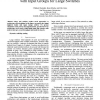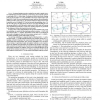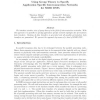429 search results - page 14 / 86 » Group Routing without Group Routing Tables |
GLOBECOM
2007
IEEE
14 years 1 months ago
2007
IEEE
—Large, fast switches require novel approaches to architecture and scheduling. In this paper, we propose the Output Buffered Switch with Input Groups (OBIG). We present simulatio...
INFOCOM
1999
IEEE
13 years 11 months ago
1999
IEEE
In general topology networks, routing from one node to another over a tree embedded in the network is intuitively a good strategy, since it typically results in a route length of O...
ASAP
2003
IEEE
13 years 10 months ago
2003
IEEE
We introduce another view of group theory in the field of interconnection networks. With this approach it is possible to specify application specific network topologies for permut...
INFOCOM
2000
IEEE
13 years 11 months ago
2000
IEEE
—We propose a new multicast protocol called REUNITE. The key idea of REUNITE is to use recursive unicast trees to implement multicast service. REUNITE does not use class D IP add...
ICCAD
1999
IEEE
13 years 11 months ago
1999
IEEE
We introduce the associative skew clock routing problem, which seeks a clock routing tree such that zero skew is preserved only within identified groups of sinks. The associative ...



